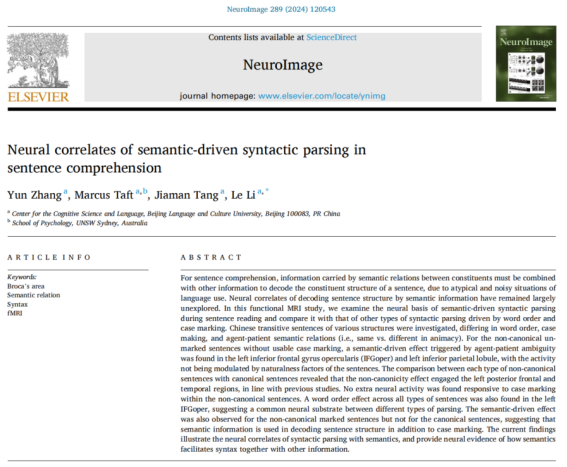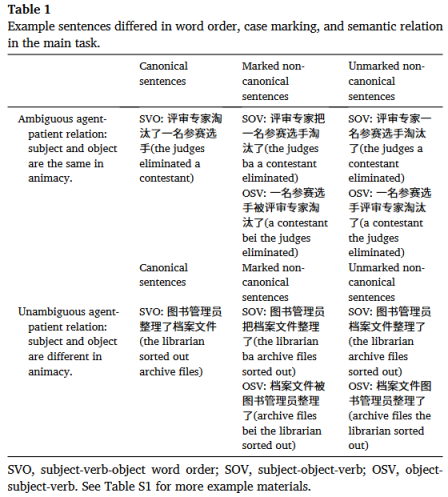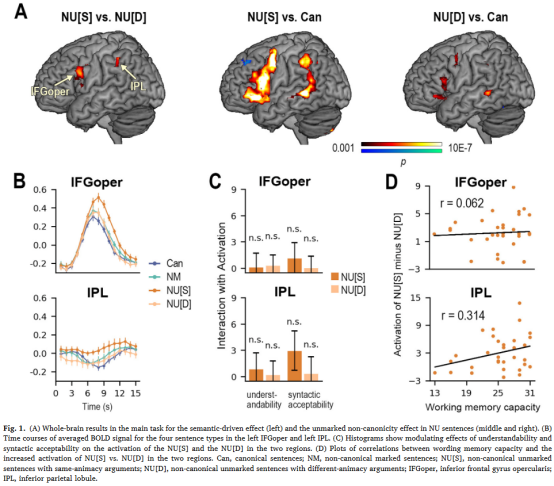Recently, Associate Researcher Le Li's research team at CCSL published a research paper titled "Neural correlates of semantic-driven syntactic parsing in sentence comprehension" in the NeuroImage journal online. The paper reveals the neural mechanisms underlying syntactic parsing driven by semantic information in sentence comprehension.
https://www.sciencedirect.com/science/article/pii/S1053811924000387

During the process of sentence comprehension, readers utilize different types of information for sentence structure analysis. For certain special sentence structures (such as atypical word orders), readers often rely more on the semantic relationships between words to decode sentence structure. However, compared to research findings on word order and grammatical markers, the driving role of semantic relationships in syntactic parsing and its underlying neural mechanisms remain unclear.Addressing this issue, this study employed functional magnetic resonance imaging (fMRI) to explore the neural basis of semantic-driven syntactic parsing during sentence comprehension through a sentence reading task. It compared this process with other types of syntactic parsing driven by word order and grammatical markers, investigating the correlations between different types of syntactic parsing. The experiment used different types of sentences, manipulating the effectiveness of word order and grammatical markers, as well as the relative animacy of subject and object.The results showed that in atypical object-preposing sentences without any grammatical markers, the semantic-driven effect triggered by agent-patient relationships mainly involved the left inferior frontal gyrus and the left inferior parietal lobule. It was demonstrated that this effect was not confounded by differences in sentence comprehensibility, syntactic acceptability, or working memory load. Additionally, the study found activation in the left inferior frontal gyrus for word order-driven syntactic processing, indicating a common neural substrate among different types of syntactic analysis. Semantic-driven effects were also observed in the processing of atypical sentences with grammatical markers, suggesting the use of semantic information in syntactic parsing alongside grammatical markers.
This study innovatively separated the driving roles of word order, grammatical markers, and semantic relationships in sentence comprehension processing, focusing on the animacy differences between subject and object in Chinese object-preposing sentences. It revealed that semantic relationship-driven syntactic parsing between sentence constituents resulted in stronger activation in the left inferior frontal gyrus, rather than regions associated with semantic integration. On a broader level, this research suggests that future studies should consider the influence of semantic-driven syntactic parsing when explaining neural activities related to syntactic processing, especially for structures with fewer effective syntactic clues, such as atypical word orders and syntactic violation sentences.

Table 1: Schematic Representation of Experimental Materials

Figure 1
Master's student Yun Zhang from CCSL is the first author of this paper, with Associate Researcher Le Li as the corresponding author. Professor Marcus Taft and master's student Jiaman Tang from the base are co-authors. This research was supported by the National Natural Science Foundation and research projects from Beijing Language University.
Paper:
Yun Zhang, Marcus Taft, Jiaman Tang, Le Li*. 2024. Neural correlates of semantic-driven syntactic parsing in sentence comprehension. NeuroImage. 289, 120543.